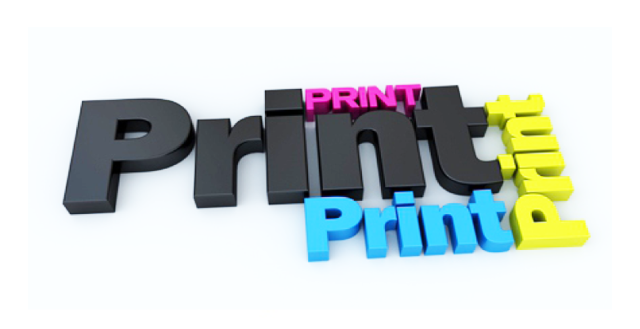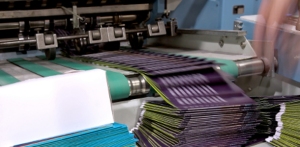
It used to be that many companies had dedicated print buyers: individuals whose sole job was to purchase the various printed needs for their employers. But those days are gone, and rarely do you find a dedicated print buyer. Today’s print buyers are administrative assistants, marketing staff, various levels of director or managers for a company. And often, they are not sophisticated in their knowledge of print, or print specifications. They have a job – to get something printed, and often, they are overwhelmed with other tasks, so they are not wishing to become experts in print – in fact, that really is YOUR job as a print sales rep to be the expert for them.
PRINT SPECIFICATIONS 101
Even though it is my job to be the expert when I meet with a client to discuss print terms, or take a call about quoting a job, or get an email quote request, for the client, knowing how to disseminate that information helps you communicate better with the printer and can be the catalyst in making sure the job is done correctly from the very beginning. But to keep it simple, here’s the basic information the printer needs to know:
- Flat size and final size, how it folds, or if it’s a book, how many pages and if it’s a self-cover (meaning all the paper is the same throughout or it has a heavyweight cover paper) – and remember, a “page” is one side of a sheet of paper. So, an 8.5 x 11″ sheet of paper has two pages.
- Ink colors – so it is 4-color or some PMS colors, or black, and is it one-sided or two-sided?
- What kind of paper do you want it on?
- What kind of proofs do you want?
- What happens to it after it gets off the press?
- And how many do you want?
 Having done print estimating for years, I tend to think in rows, with each row having specific attributes of the job. Here are the rows as I see them:
Having done print estimating for years, I tend to think in rows, with each row having specific attributes of the job. Here are the rows as I see them:
- Description of the job (i.e., job name, etc.)
- Flat size, final size, folding, or number of pages and either plus cover or self cover
- Ink colors, coatings, etc.
- paper
- Proofing requirements
- Bindery requirements, post press work, packaging and delivery
- Quantity or quantities
As you can see, each line gives me specific information on the job, and tells you as the client what the job is going to be. This is also a vital area for you as the client to review to make sure that the printer understood your specifications, or that you communicated your specifications correctly, and make any revisions at the quote stage.
HOW DO I APPLY THIS?
Let’s do an example of a quote request using that row method, and then we’ll dissect it:
- Product Brochure
- 17 x 11″ flat, score and fold to 8.5 x 11″
- Prints 4-color plus spot gloss varnish 2 sides
- 95# Topkote gloss cover
- Epson and Iris proofs
- Score, trim, fold, shrink-wrap in 100’s, deliver
- 2500, 5000, 7500 or 10000 brochures
 That tells the printer exactly what to do with the estimate. In this one you’ve given the flat size so they know how many they can get up on a press sheet, you’ve told them the final size, so they can infer that it folds; you’ve spelled out exactly what inks are to be used, and even called out a very specific paper and weight; you’ve directed what kind of proofs you want, and the final bindery that will be needed. Since most print MIS systems take the estimates and convert them to work orders or job tickets, having this information correct from the beginning insures that the job will be produced correctly. Let’s look at another sample:
That tells the printer exactly what to do with the estimate. In this one you’ve given the flat size so they know how many they can get up on a press sheet, you’ve told them the final size, so they can infer that it folds; you’ve spelled out exactly what inks are to be used, and even called out a very specific paper and weight; you’ve directed what kind of proofs you want, and the final bindery that will be needed. Since most print MIS systems take the estimates and convert them to work orders or job tickets, having this information correct from the beginning insures that the job will be produced correctly. Let’s look at another sample:
- Fall 2014 Catalog
- 36 pages plus cover, 8.5 x 11″ final size, stitch on 11″ edge
- Cover prints 4-color plus overall gloss aqueous, 2 sides, 100# Endurance gloss cover
- Text prints 4-color plus overall gloss aqueous 2 sides, 80# Endurance gloss book
- Epson proofs, flip book PDF proof, include 2 hours of corrections and proofs in price
- Score/fold cover, gather, stitch, box, deliver to warehouse
- 10000, 15000, 20000, 25000
This one is a bit different. Remember that when you have multi-page books you have to specify pages, remembering that each side of a sheet is a page. Again, you’ll notice that the paper is called out, the ink is called out, and that the client is asking the printer to build in time for corrections and proofs, so that they are not charged additional costs for those changes.
These are guidelines on how to create print specifications that are understood by printers, and even as basic as these are, there will always be variations, say if you doing packaging or large-format printing. And your print services provider should always ask you the kind of questions to insure that the quote is correct, and, in the end, the job is correct.
—

Very nice, John! I totally agree, it is the sales person’s responsibility. Fortunately, at JP Enterprises we have some who specializes in that. But there have been times when he is out and I have to figure it out myself. That’s always rough. It definitely helps to be talking to someone who knows what they are talking about.
Reblogged this on Stevens Integrated Solutions.
The only thing missing from John’s specification list is this: Does the project bleed?
Good point, Dave. But lately, at least printers that I’m associated with, we assume bleed on everything and take that into account in our pricing and layouts.